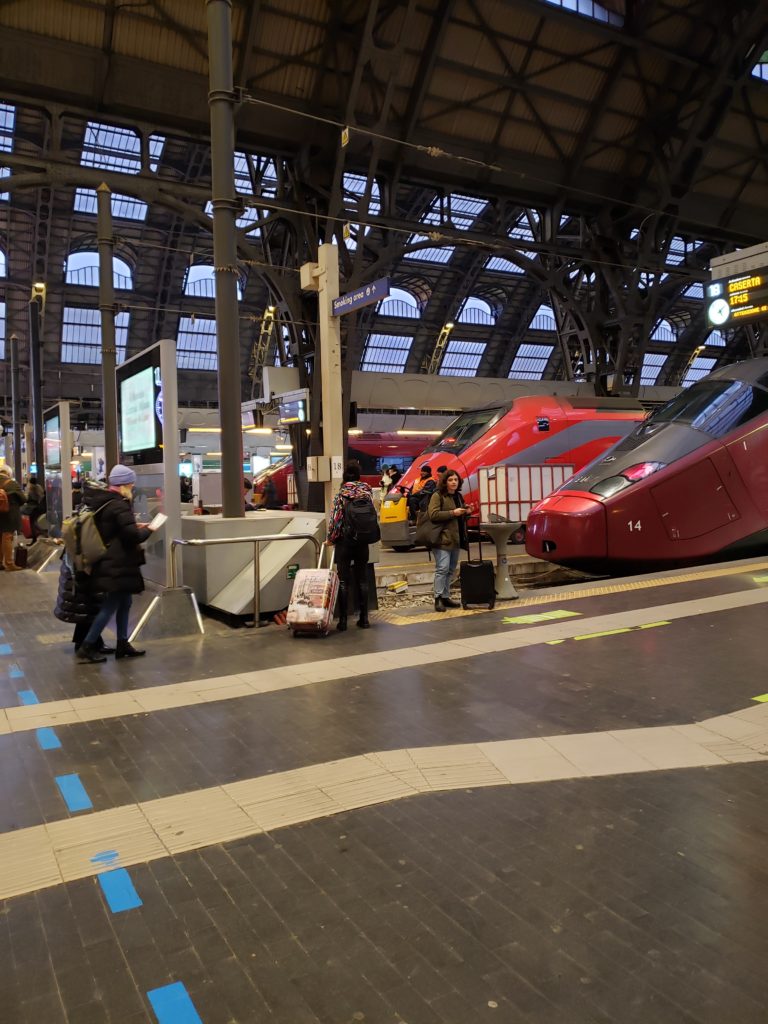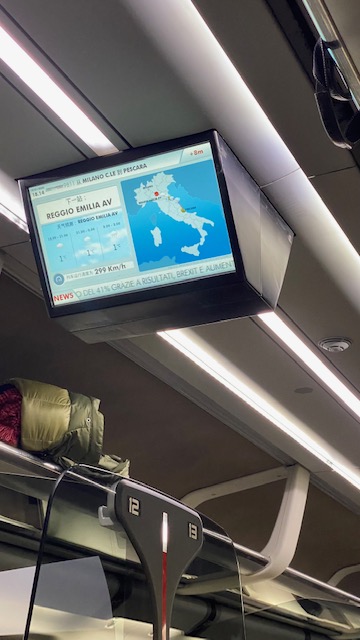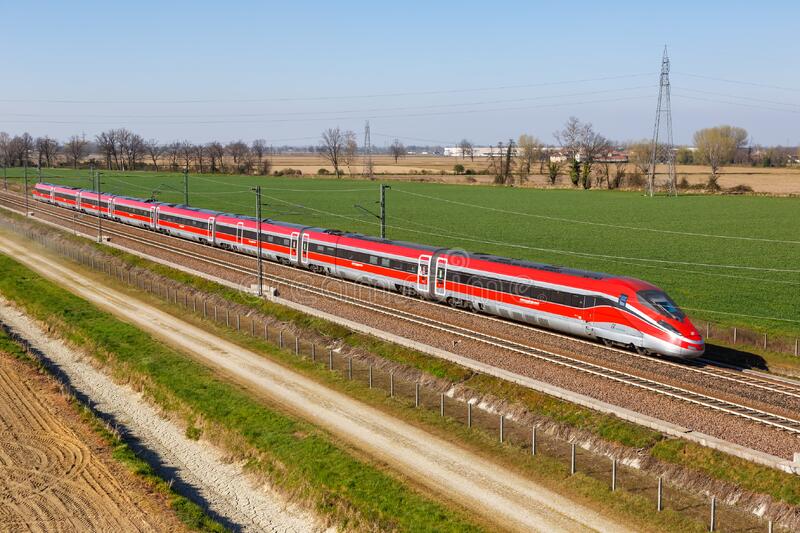Do you remember when your math teacher tried to explain to you how to solve this problem: If cars and trucks are traveling at 70 miles per hour along side a train that is traveling 180 mile per hour and they both leave from the same location at 9:00 am and the destination is 500 miles away. How much time does it take for both to arrive? This is one of the thoughts I had as I looked out the window by my seat on Trenitalia 9811 on the Frecciarossa, Italy’s version of the bullet train. We took the Frecciarossa from Milan to Rimini, Italy which runs along the E35 highway leaving Milan. It was thirty minutes past the golden hour so the head lights on the rush hour traffic glittered like a diamond tennis bracelet in the darkness. As we picked up speed I noticed the traffic “stalled”. It looked like the mother of all traffic jams – stalled for miles and miles. It took longer than I care to admit for us to realize that the appearance of the stopped traffic was on account of our speed, an illusion. We were moving at 180 miles per hour. They were moving at rush hour crawl or maybe, eventually, 60 miles per hour.

Francciarossa means red arrow, introduced in 2008, fifteen years ago.
This high speed train system has had one only one derailing in it’s history. It is safe. The livestock aren’t terrorized as it speeds through the countryside. The seats are spacious. There is coffee service, bottles of prosecco, cookies, dining on certain routes (which of course is built into the cost of your ticket similar to airfare).
Seniors and youth receive substantial discounts. Usage is high, even during off season reservations are a must. It is very comfortable. You can get up and walk around. There is a bar. Plug in your computer and work or watch a movie. This a long introduction to the idea that the United States rail system is in the 19th century. Laughing -maybe even the 18th century. Brownwood became an important city on account of it’s position on the rail lines. I feel pretty sure that the relative average income of Brownwood’s citizens was higher during the hay day of rail travel than it is now. I know that is a complicated comparison.
That’s a economic study I would like to see. The Harvey House served fine seafood because it received daily deliveries from the coasts. Take a look at their cook book. You can buy a copy at the chamber gift store at the depot. The train was the Fed Ex of those times. People and things traveled faster on the rails in those days than they do now because we no longer understand the value of trains. Our rails are derelict. There is the illusion that vehicles are faster than trains, the illusion that cars are safer than trains, the illusion that cars give you more independence than trains.

The end of World War 2 brought an end to train travel in the U.S. when President Eisenhower introduced legislation to create the Interstate highway system. Change is certain. There is always change. We can’t always predict the unintended consequences of change. We can’t always control change. In this case the Interstate helped kill train traffic which in turn made depots like Brownwood’s obsolete and The Browntowner Hotel obsolete. It became in the automakers best interest to defund public transportation in order to sell more cars and trucks.
Automobiles became the symbol of American independence and sexiness, a marketing illusion. Most of us in the lower classes sink a minimum of 10% of our income into our cars, an object with a 12 year life span. This expense does not include fuel, maintenance and insurance. Does that make sense? Only if your community does not provide good reliable public transportation for local transportation and safe bicycle culture. Wouldn’t it be better to invest that 10% plus in you own housing, education, trades, city infrastructure. As a country we put satellites in space, but we seem to be unwilling to build an efficient public transportation system. They do exist in other countries. We know it can be done. What kind of community do we want to build. What is the vision? What are the unintended consequences of the things we do? Why not invest in things of permanence? Is the traffic stalled, or moving at half speed?
[Story written by Mary Stanley of Brownwood. It the first of a series chronicling her travels through Italy]
